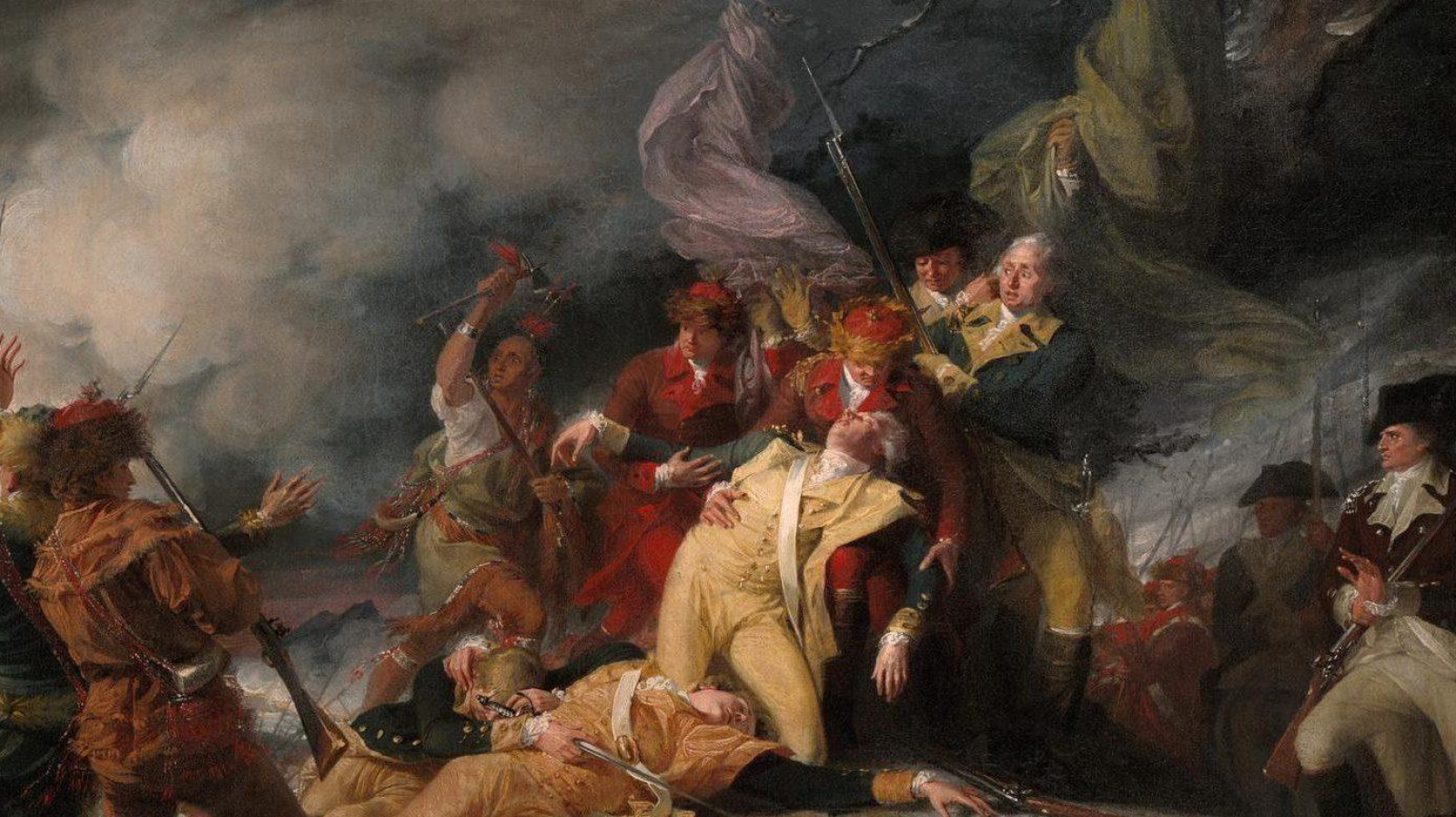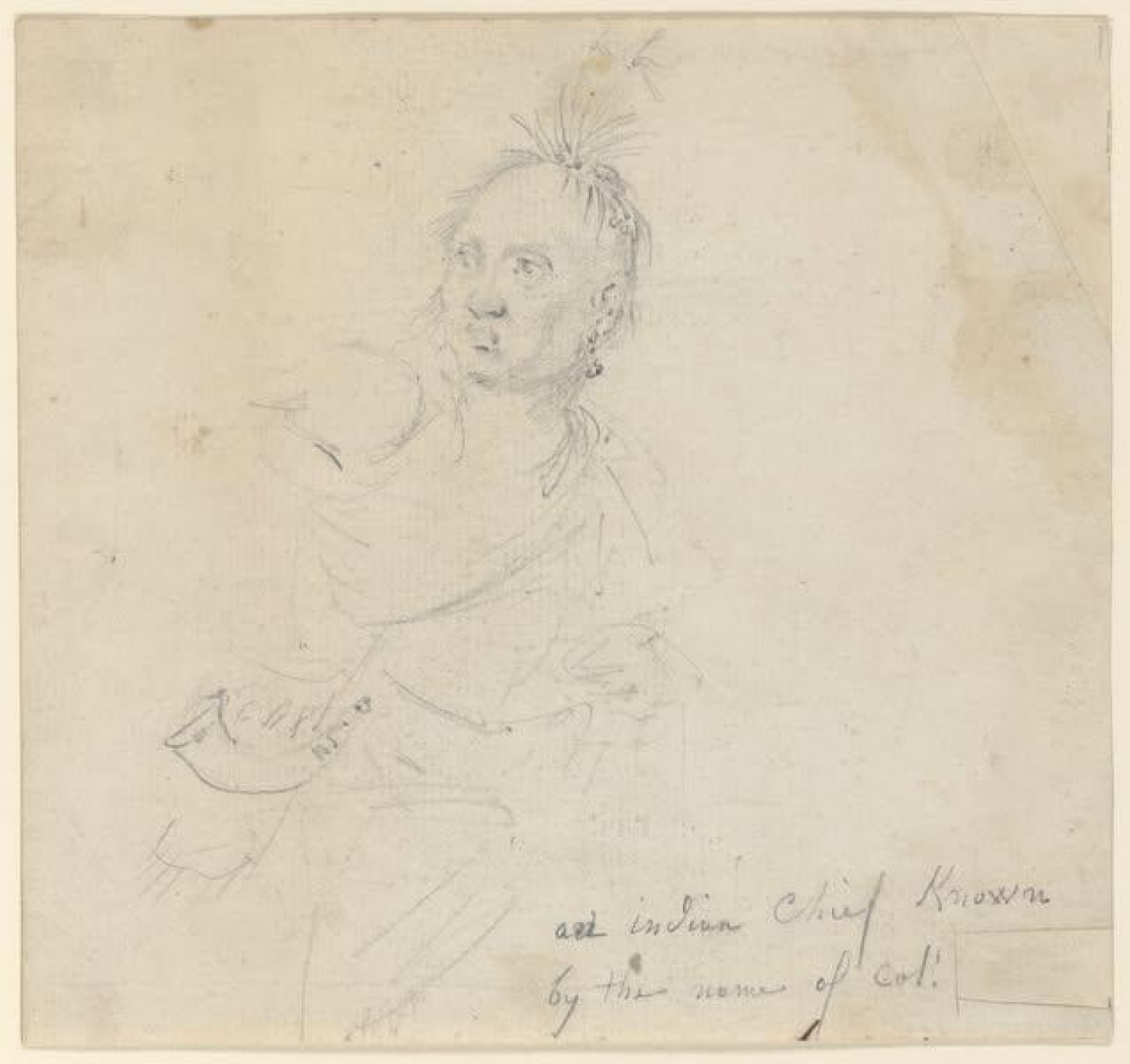Atiatoharongwen was born circa 1740. Around 1745, the French and their Indigenous allies attacked his village in the present-day state of New York. He was adopted afterwards by Indigenous warriors from Kahnawake, which the French called Sault-Saint-Louis. These warriors were Kanien'keha:ka (Mohawk) and made Atiatoharongwen a member of their nation. Soon after, his birth mother died. He converted to Catholicism and learned French while serving the Catholic missionaries in the village.
French and Indian War
As an ally of the French during the French and Indian War, he commanded a detachment of First Nation combatants. He was present at the Battle of Carillon (1758) and on the Plains of Abraham during the Battle of Sainte-Foy in 1760. It was during this war that he made a name for himself as a military leader. He also developed feelings of animosity toward the British that would stay with him his whole life.
After the war, he married Konwanonsontion in Kahnawà:ke. They had three children and raised them in Akwesasne, which was still known under the name of Saint-Régis. His wife died in 1770, however, and all of his children were dead by 1776.
American War of Independence
He took up arms again at the onset of the American War of Independence. It seems that he provided assistance as a messenger during the attempt by Brigadier General Richard Montgomery to take Quebec City (1775). His participation in the war earned him the rank of lieutenant colonel in the Continental Army of the Thirteen Colonies, now in rebellion. During the rest of the war, he commanded detachments of First Nation warriors and took part notably in the American victory at Saratoga (1777). He was active during the entire war.
In the late 1780s, he settled with his new wife Tewennihatha in Akwesasne, where they raised their five children. With the help of his reputation and his different military achievements, he became one of the chiefs. Although support for the Americans would always be lukewarm in his village, which supported the British just as much if not more, he nonetheless remained influential in his adopted nation until the end of his life.
Atiatonharongwen took up arms for a final time during the War of 1812. Now more than 70 years old, he received a general’s commission in the American army and helped fight the British.
Wounded at the Battle of Lundy’s Lane in July 1814, he died from his injuries in October 1814 and was buried near Buffalo, New York.
Credit:
- Trumbull, John. The Death of General Montgomery in the Attack on Quebec, December 31, 1775. 1786, Yale University Art Gallery, New Haven. https://artgallery.yale.edu/collections/objects/57
- Trumbull, John. Captain Joseph Lewis of Louis, of the Oneida Indians, study for the "Attack on Quebec", no. 6 in key. Circa 1785-1786, Yale University Art Gallery, New Haven. https://artgallery.yale.edu/collections/objects/47329

